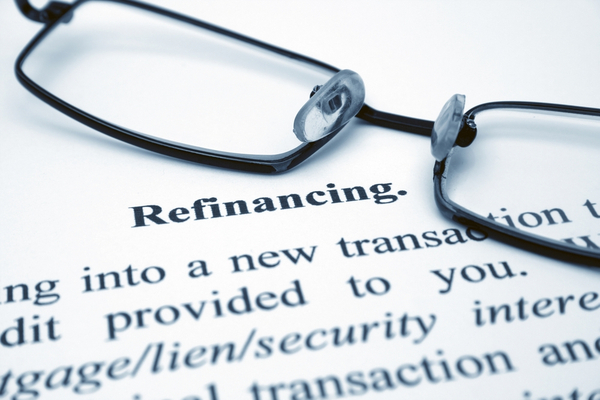Maxed out your credit cards? Having trouble paying your bills? You’re certainly not alone. If you’ve been struggling to get a handle on your debt and are looking for a fresh start, then you may want to consider debt refinancing. Here is some useful information to get you started.

What Is Debt Refinancing?
Debt refinancing is the replacement of an existing debt by taking on another with terms and conditions that are more favorable. In simple terms, you are replacing one loan with another. [1] Refinancing is a preferred tool because it is a quick process, relatively easy to qualify and provides you some breathing room to manage your debts.
The most common reasons to refinance debt are:
- To take advantage of better interest rates
- To reduce the monthly repayment amount by entering into new debt with longer terms
- To switch from a variable-rate debt to a fixed-rate debt
- To consolidate debts
- To change the loan structure[2]
- To free up cash
What About Total Debt Forgiveness?
While many will hope to have their debt completely forgiven, it is extremely rare for this outcome to materialize. Generally, this is only possible with a bankruptcy, but that has consequences as well. The resulting effect on your credit score will make it very difficult to obtain credit in the future, which could cause larger problems later on. While in some cases a bankruptcy might be the best option, it is often best to explore refinancing your debt first.
Financial Assistance Professionals
Financial assistance professionals can help you achieve financial freedom by helping you consolidate your debt and understand your options. [3] The counsellor discusses your entire financial situation and helps you develop a personalized plan. Primarily, they can assist you in developing a budget. Here are some cases where you may want to work with a professional to manage your debt load.
- Debt management programs
- Debt settlement
- Negotiating with debt collectors
- Consolidating credit card debt
Government Debt Relief Programs
Government debt relief programs don’t technically exist. However, the federal government plays a role in offering online advice at Dealing with Debt. It provides services that help you pay your bills. The Consumer Financial Protection Bureau works to protect consumers from unfair policies. If you’ve been the victim of shady financial actions, just submit a complaint to the CFPB. Another renewed government institution Servicemembers Civil Relief Act offers services for members of the military. If you served in the military you can get greater benefits, such as interest rate caps and even debt forgiveness in some situations.
Debt Relief With a Mortgage
If you are considering refinancing your debt and currently have a mortgage, you have some extra leverage to work with. There are several options available to you.
1) No cash-out refinance
This is the most common option. A no cash-out refinance means you are refinancing an existing mortgage for an equal or less amount that the previous one. It may make sense if you’re looking to lower your mortgage rate, move from one mortgage product to another, or build equity faster. If your financial situation has improved since your purchase, you may consider refinancing to a loan with a shorter term.
2) Cash-out refinance
If you’ve built up significant equity through your monthly payments a cash-out refinance may make sense to improve your general financial situation. With a cash-out refinance, you’re refinancing your mortgage for more than you currently owe and, in return, getting a portion of your equity back in cash. Cash-out refinances generally have slightly higher mortgage rates.
3) Freddie Mac Enhanced Relief Refinance℠
If you would like to refinance but your loan-to-value ratio exceeds the maximum allowed for a standard no cash-out refinance product, an Enhanced Relief Refinance might make sense for you. An Enhanced Relief Refinance Mortgage may help you obtain a monthly payment you can afford, by reducing your mortgage rate and monthly payment or reducing your mortgage term.[4]
Conclusion
The first step toward taking control of your financial situation is to do a realistic assessment of your spending. Once you’ve developed a budget that works for you, either on your own or with the help of a financial professional, then it will be easier to consider your options for debt refinancing. It’s all about setting yourself up for success in the future. While there are a number of different options available, there is no magic one-size-fits-all solution. In order to find what works for you, the best place to start is with some thorough research.
References
- Wamala, Yowana. “What Does It Mean to Refinance a Loan?” ValuePenguin. June 29, 2020. https://www.valuepenguin.com/loans/refinancing-a-loan-what-it-means.
- “8 Reasons to Refinance Your Mortgage.” MortgageLoan.com. March 30, 2020. https://www.mortgageloan.com/8-reasons-to-refinance-your-mortgage.
- “Debt Assistance Programs.” ConsumerCredit.com. https://www.consumercredit.com/debt-assistance-programs.
- “Single-Family.” FreddieMac. https://sf.freddiemac.com/working-with-us/origination-underwriting/mortgage-products/enhanced-relief-refinance-mortgage.
